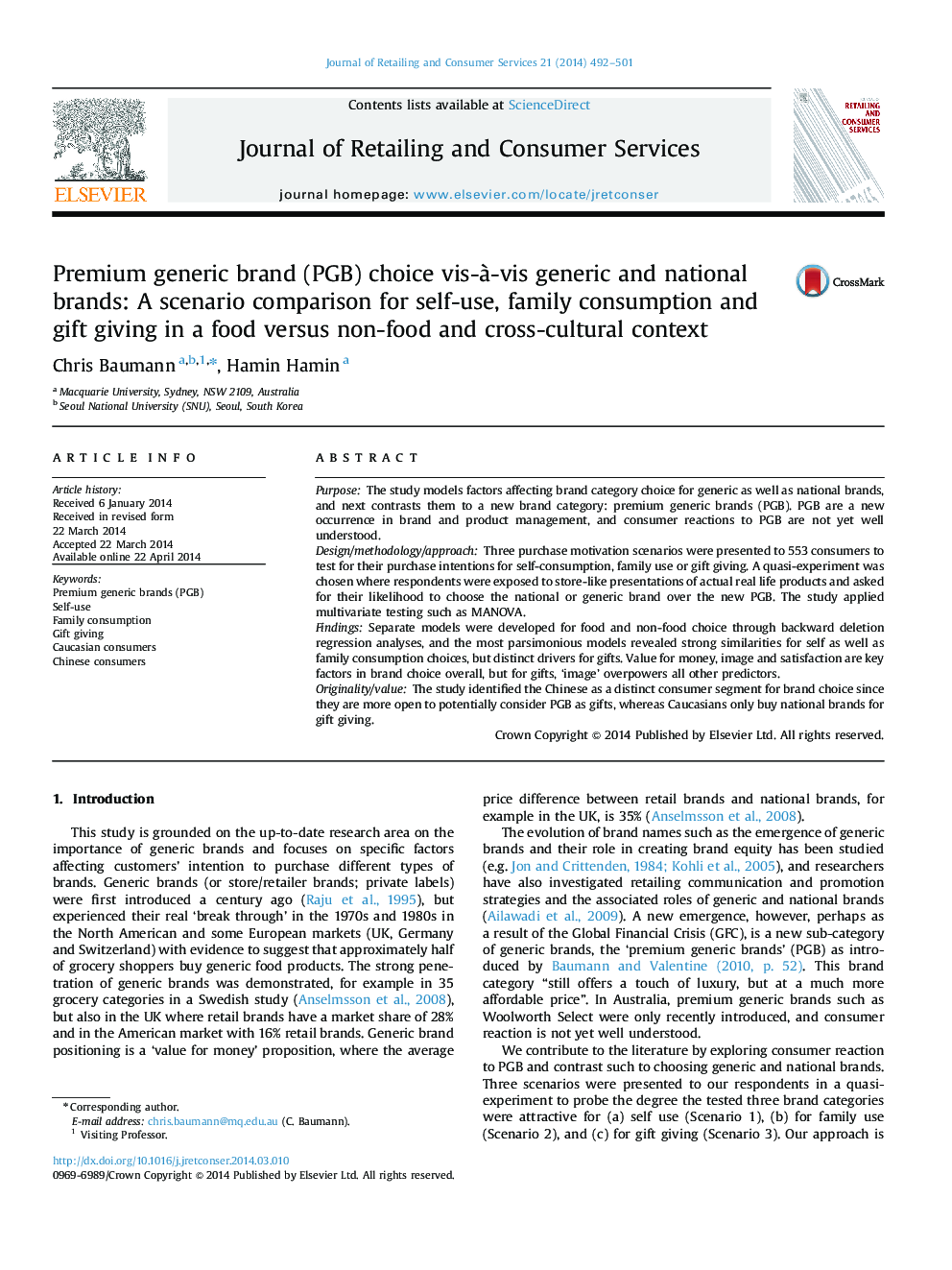| Article ID | Journal | Published Year | Pages | File Type |
|---|---|---|---|---|
| 1029033 | Journal of Retailing and Consumer Services | 2014 | 10 Pages |
•A new brand category not yet understood are premium generic brands (PGB).•We model food and non-food choice for generic, national brands and PGB.•Most parsimonious models for self and family consumption contrasted to gift giving.•Chinese are a distinct consumer segment for brand choice considering PGB as gifts.•Caucasians only buy national brands for gift giving.
PurposeThe study models factors affecting brand category choice for generic as well as national brands, and next contrasts them to a new brand category: premium generic brands (PGB). PGB are a new occurrence in brand and product management, and consumer reactions to PGB are not yet well understood.Design/methodology/approachThree purchase motivation scenarios were presented to 553 consumers to test for their purchase intentions for self-consumption, family use or gift giving. A quasi-experiment was chosen where respondents were exposed to store-like presentations of actual real life products and asked for their likelihood to choose the national or generic brand over the new PGB. The study applied multivariate testing such as MANOVA.FindingsSeparate models were developed for food and non-food choice through backward deletion regression analyses, and the most parsimonious models revealed strong similarities for self as well as family consumption choices, but distinct drivers for gifts. Value for money, image and satisfaction are key factors in brand choice overall, but for gifts, ‘image’ overpowers all other predictors.Originality/valueThe study identified the Chinese as a distinct consumer segment for brand choice since they are more open to potentially consider PGB as gifts, whereas Caucasians only buy national brands for gift giving.
